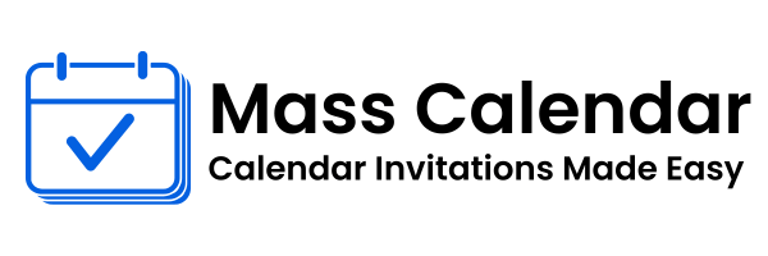Bulk Calendar Scheduling: A Roadmap for High‑Volume Organizers
Digital calendars have evolved from simple datebooks into dynamic hubs of collaboration. Yet many teams still wrestle with fragmented invitations, timezone chaos, and manual overhead. If that sounds familiar, learning how to efficiently invite calendar participants and manage a calendar in bulk can transform your operations.
BLOG
6/16/20252 min read


Digital calendars have evolved from simple datebooks into dynamic hubs of collaboration. Yet many teams still wrestle with fragmented invitations, timezone chaos, and manual overhead. If that sounds familiar, learning how to efficiently invite calendar participants and manage a calendar in bulk can transform your operations.
The Scaling Problem
Small teams may survive by typing addresses into Google Calendar. But expand your scope to:
Company‑wide town halls
Global sales demos
Multi‑track webinars
Volunteer coordination across regions
…and manual methods buckle. The pain shows up as missed invites, low attendance, and endless rescheduling.
Core Principles of Bulk Scheduling
Centralized Data Management
Store attendee info in one master sheet or CRM.
Template‑Driven Invites
Standardize subject lines, descriptions, and links.
Automated Distribution
Integrate with APIs or bulk import tools.
Transparent Tracking
Monitor RSVP, bounces, and updates in real time.
Follow these pillars and you’ll avoid 90 % of common pitfalls.
Step‑by‑Step Implementation
Step 1 – Identify Your Audience
Segment by time zone, team, or language. This ensures relevant timing and content.
Step 2 – Gather Clean Contact Data
Use a structured CSV (Name,Email). Validate emails before proceeding.
Step 3 – Draft Your Event Blueprint
Include:
Title and subtitle
Start/end times
Video conferencing link
Dial‑in options
Agenda & prep docs
Step 4 – Choose Your Distribution Method
Bulk Import:
In Google Calendar, click Guests › Import and upload your CSV.
Group Alias:
Create all‑hands@yourcompany.com and add that single alias to the event.
API/Automation:
Use scripting (Python, Apps Script) to loop through contacts and push events via the Calendar API.
Step 5 – Send a Test Run
Invite a small pilot group. Verify:
Time zones render correctly
Links are clickable
RSVP status updates
Step 6 – Launch to the Full List
Once confident, hit Send or execute your script.
Step 7 – Monitor & Remind
Set built‑in reminders (e.g., 24 hours, 15 minutes). Nudge non‑responders with a quick follow‑up email.
Step 8 – Post‑Event Maintenance
Archive recordings or slides in the event description.
Export attendance for reporting.
Clone event templates for future sessions.
Common Pitfalls to Avoid
Time‑Zone Tangles – Always specify the base time zone in event settings.
Broken Meeting Links – Test your conference link before sending.
Over‑Notifying Guests – Fine‑tune reminder cadence to prevent alert fatigue.
Neglecting Data Hygiene – Regularly purge outdated or duplicate emails.
Measuring Success
Successful bulk scheduling isn’t just about sending invites—it’s about tangible outcomes:
Attendance Rate – (# attendees / # accepted) × 100.
Engagement – Poll participation, Q&A volume.
Reschedule Frequency – Fewer changes indicate better planning.
Track these KPIs to refine future scheduling strategies.
Looking Ahead: Smart Automation
The future of bulk calendar management will include:
AI‑driven availability matching
Automatic follow‑ups based on no‑shows
Time‑zone conversion hints for invitees
Inline RSVPs in messaging apps
Adopting scalable practices now prepares you for these advancements, keeping your operations future‑proof.
Conclusion
Efficiently learning how to invite calendar participants and handle your calendar in bulk is more than a productivity hack—it’s a strategic advantage. It leads to higher attendance, smoother collaboration, and reduced back‑and‑forth. Take the time to centralize data, template your invites, and automate your workflows. Once your system is dialed in, scaling from a 10‑person meeting to a 10,000‑person webinar becomes a matter of clicks, not chaos.
Ready to overhaul your scheduling process? Start by cleaning your contact list and experimenting with your calendar platform’s bulk features today. Your future self—and your attendees—will thank you.
MassCalendar.in
Send Bulk & Mass Calendar Invites Instantly
CONTACT
Meetings
+44 (0) 203 916 5117
© 2025. All rights reserved.
Help?
